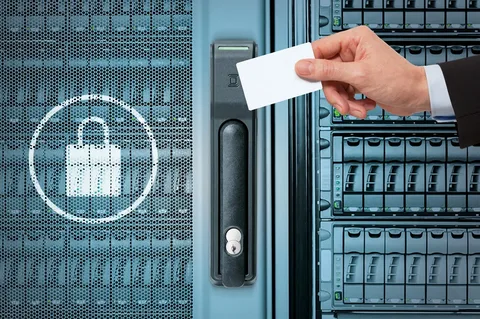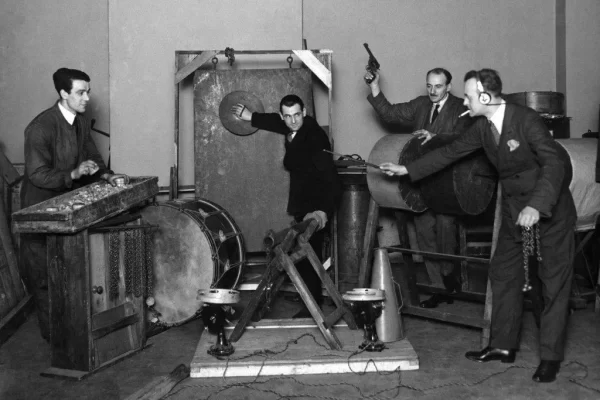Physical security protects against real-world threats that question data security. It can include measures to keep employees, facilities, and equipment safe from harm, including natural disasters, fire, robbery, vandalism, and burglary.
Access control is a common physical security measure that limits access to amenities and restricted areas to only a specific group of people. This can include MFA, unique PINs, or biometric identification.
- Access Control
Many physical security measures are designed to prevent unauthorized access. These include building locks, perimeter security, video surveillance, and a range of other devices. This layered approach works to protect against different types of physical threats to business operations and assets like intellectual property, hardware, data, and people.
Perimeter security includes fences, gates, barbed wire, and other forms of deterrence to keep intruders out of facilities. It also incorporates landscaping elements, like high hedges and maintained walking paths. Interior design and layout can also be used to create barriers to entry, with features like staffed guards, employee ID card systems, and other technologies that limit access to certain areas in the facility.
These technologies often work to authenticate identity through proximity ID badges, mobile authentication, or other methods. This not only makes it difficult for unauthorized users to get into a building, but it also gives businesses insight into daily traffic and failed access attempts.
In addition, a robust physical security plan should include fire detection and monitoring. Detectors can identify smoke, heat, and water buildup in advance of a fire, reducing the impact and damage that could result from such a disaster. Monitoring can track a facility’s environment in real-time with sensors that monitor things like temperature changes and air movement.
A good physical security strategy also includes training and testing. Testing is important because it helps organizations understand how well they are protecting against physical attacks. It can be performed through audits, a risk assessment, or by partnering with an independent physical security consultant. There are a variety of resources for finding one, including the International Association of Professional Security Consultants (IAPSC). The IAPSC is an organization that connects independent consultants with businesses looking to secure their operations from physical attacks.
- Video Surveillance
A critical component of any security program is video surveillance. It helps prevent crime from occurring by monitoring high-value sites that are attractive targets for thieves and vandals, such as auto dealerships, construction projects, public utilities, and power plants. In addition to reducing crime, video surveillance can also help protect people and property by monitoring unauthorized entries, suspicious activity, and other anomalies.
The type of surveillance used matters a lot, however. While most people support CCTV cameras on city streets, they may not be supportive of indiscriminate telephone taps. A good strategy is to have a plan that determines where and when to use camera systems, how many cameras are needed, and what types of data are collected and retained.
Using video surveillance, businesses can improve their response time and increase efficiency by monitoring events in real time rather than waiting to receive alarms after the fact. In addition, by using advanced features like event-based recording and alerts, enterprises can optimize storage space while ensuring that no incident goes unmissed.
When selecting a video surveillance solution, it is important to consider the number of cameras required, the resolution of the camera, and whether a mobile app will be included. It is also a good idea to select a system that can be integrated with other physical security technologies, such as access control and mobile credentialing solutions.
CHeKT’s Visual Security is a powerful tool for preventing crime and ensuring physical security, thanks to its artificial intelligence and video analytics capabilities. The system is easy to use and can be accessed from anywhere, which provides customers with added peace of mind and competitive advantage. In addition, the system can be configured to instantly send instant alerts via email or push notifications, ensuring that no incident is missed.
- Fire Detection
Fires are another important threat to physical security, and a wide range of factors can cause them. They can be caused by deliberate actions, such as arson or sabotage, or by accidental events, like a power outage that leads to flammable equipment overheating. Fire detection can help to prevent these types of incidents by alerting staff or security personnel to any potential hazards in the building. It is also important to ensure that all escape routes are free of obstruction and that they are easy to access in the event of a fire.
The layered approach to physical security that is sometimes referred to as defense in depth is necessary to ensure the safety of staff and assets in any facility or building. As such, it is crucial to consider all possible threats when creating a security plan, regardless of whether they are human or natural in nature.
Although the specifics of a security plan will always depend on the needs of the premises, most plans will have a number of common elements. These include access control, surveillance, and fire detection. By combining these measures, it is possible to create a comprehensive security solution that will protect facilities and their assets from a variety of real-world risks.
If you are looking to secure your property with the assistance of a physical security consultant, there are a number of resources available to help you find the right expert for your needs. The IAPSC is a good place to start, as it offers a database of independent consultants across the globe. This database can help you to find the perfect physical security consultant for your unique requirements.
- Lighting
Physical security includes a wide range of security practices that protect organizational assets like people and equipment from theft, natural disasters, manmade catastrophes, and accidental damage (like electrical surges and spilled coffee). Although each organization’s specific needs vary, working examples of physical security strategies all share some common measures.
For example, to prevent unauthorized access, many organizations will require a physical barrier that limits unauthorized entry or exit to certain areas. A security system that requires two-factor authentication also allows companies to verify a person’s identity before allowing them into a restricted area, which can deter criminals and reduce the likelihood of theft.
Similarly, an alarm system can help alert businesses to intruders or sudden changes in environmental conditions, such as a fire, water leakage, or smoke buildup. This type of advanced detection will enable you to respond quickly and limit the impact of a crisis, which could otherwise damage your reputation or, worse, lead to financial losses from damaged inventory, lost data, or compromised personnel.
However, despite best efforts to install and maintain physical security measures, incidents still happen, and they may not always be the result of your site’s security setup. That’s why a comprehensive risk assessment and stress testing are essential components of an effective physical security plan.
These types of tests can expose weaknesses in your existing security plans and identify new threats you didn’t anticipate. In turn, this helps you to prioritize your security investments and make the most of your budget. In addition, digested data provides a clear view of your security system’s performance and effectiveness over time, making it easier for security teams to meet compliance requirements.
- Monitoring
A business’s physical security is an extremely important aspect of its operation, safeguarding critical data, hardware, and other tangible assets. It’s also a field that can be difficult to grasp at first. However, with some time and effort, you can be an expert on this essential topic.
The monitoring component of a physical security strategy is comprised of the staff, resources, and technology used by organizations to monitor activity in different areas of their facilities. This includes everything from dome surveillance cameras to sensor-based alarm systems. This is one of the most important components to consider when creating a physical security plan, as it can help prevent attacks before they happen.
It’s also essential to have a way of tracking when unauthorized access occurs so if a breach does occur, companies can take action quickly. For example, implementing multi-factor authentication on access control can significantly increase the time it takes for unauthorized users to gain entry. This is because it requires them to present multiple pieces of authorized evidence in order to gain access, such as typing in a password or scanning an ID badge.
Another important aspect of monitoring is having a system in place that can alert you to any issues quickly, such as a fire breaking out or someone trying to break into a room. This can be done through a combination of methods, including having a dedicated team that is responsible for handling emergency situations or integrating a smart system that is able to detect certain anomalies and alert you immediately.
This is the point where you should also liaise with other departments and stakeholders to confirm that everyone’s expectations for your new physical security measures are clearly set out. You should also set up regular check-in calls to ensure that all the teams involved are aware of their responsibilities and that the transition is going smoothly for them.





